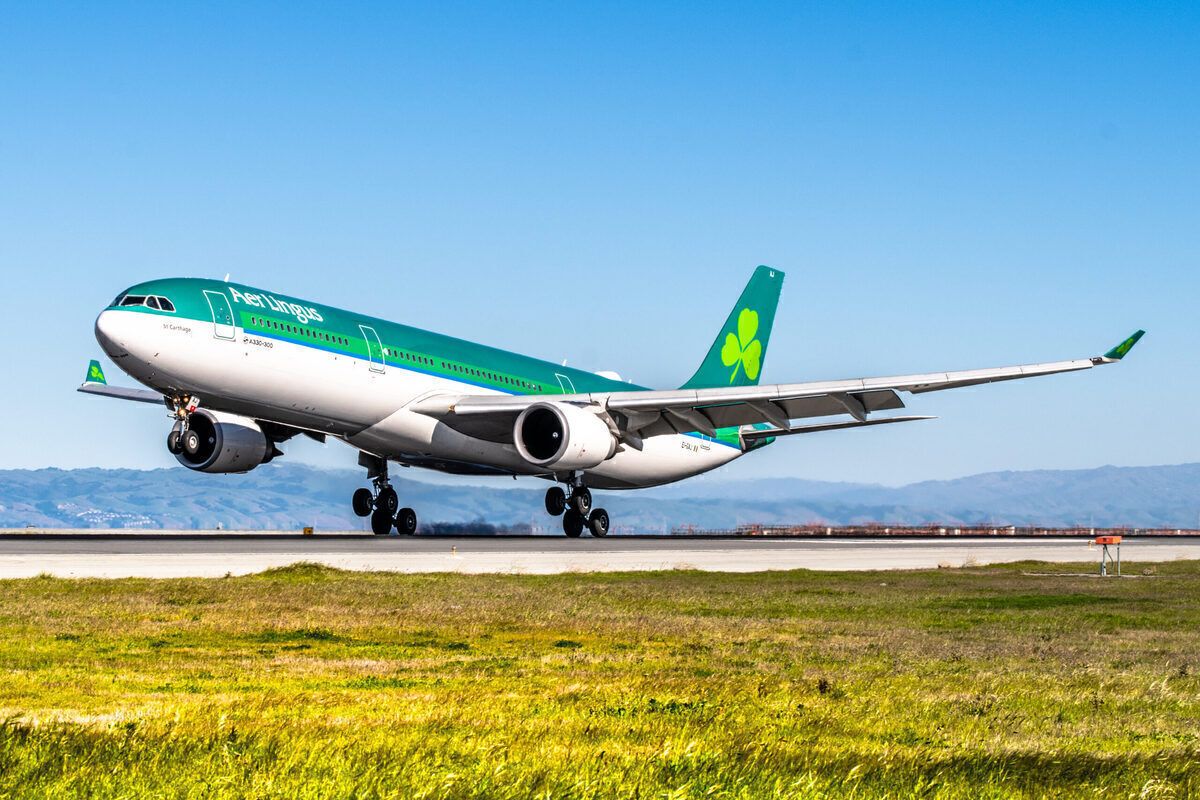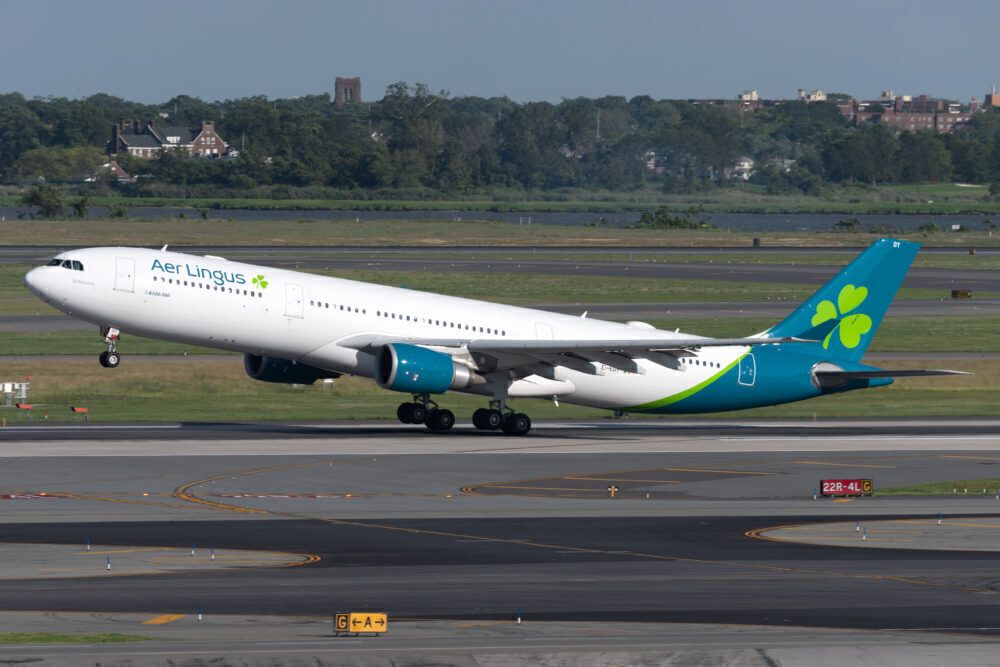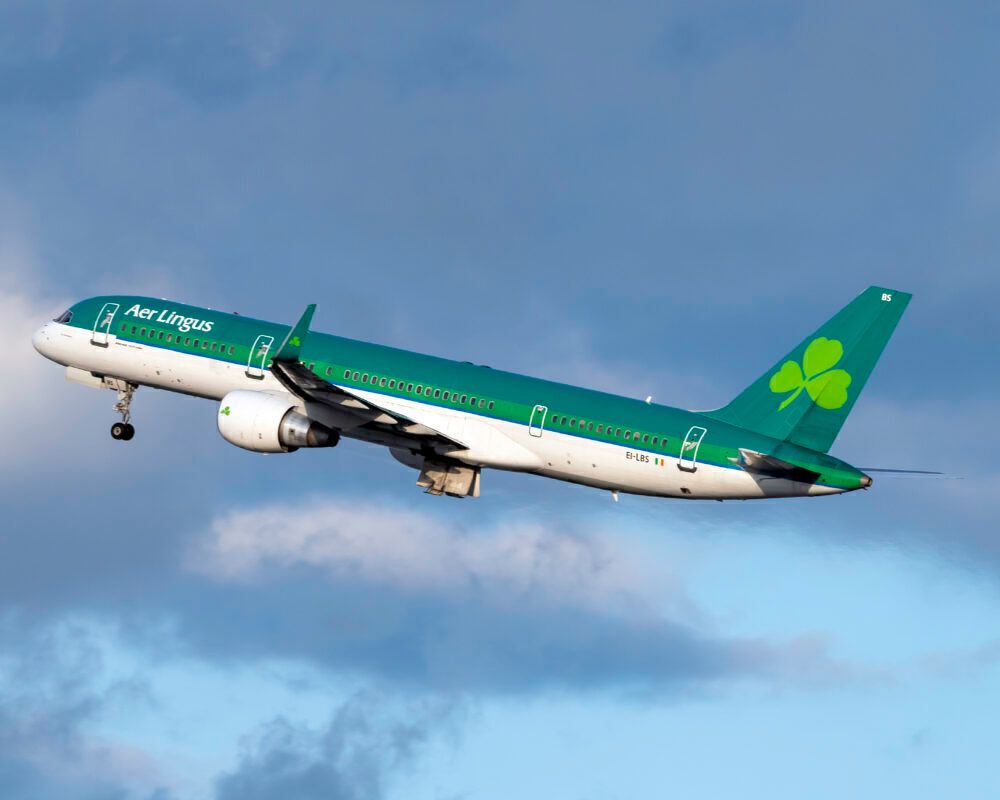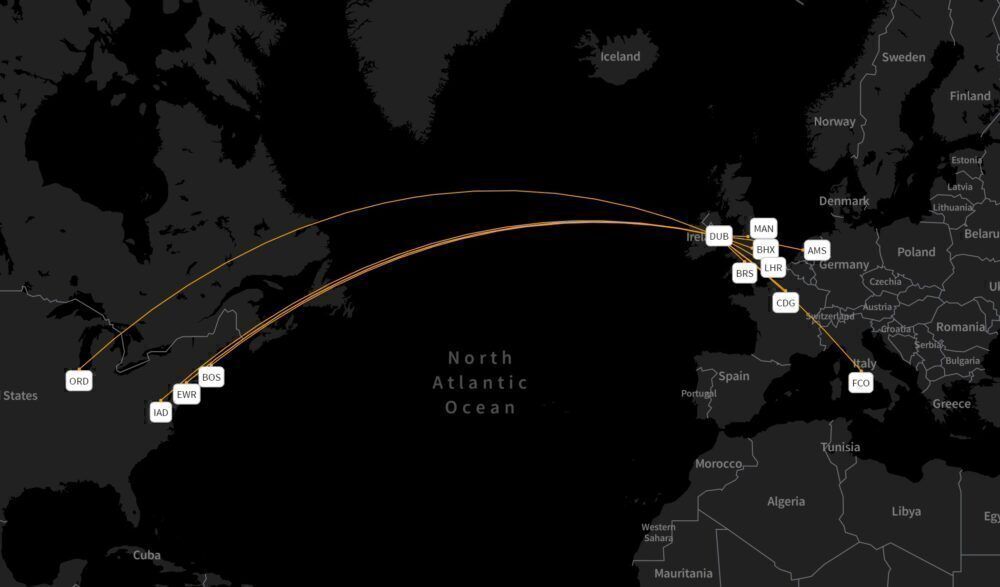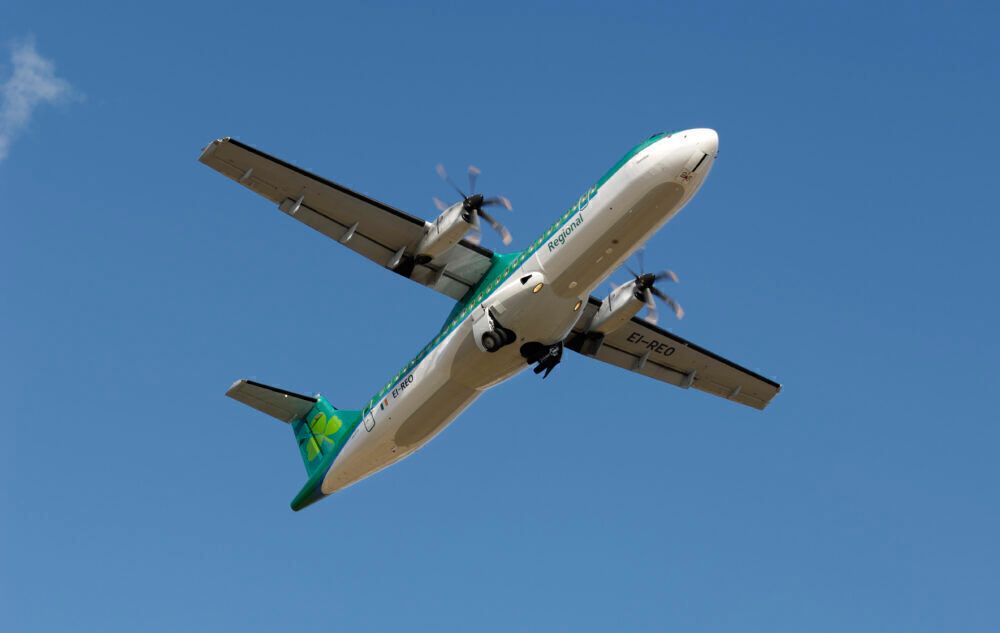Aer Lingus is a key player between North America and Europe, and in 2019 it had 16 routes across the Atlantic from Ireland. Around 45% of its Aer Lingus' passengers connected, with the US to the UK, Germany, Italy, Spain, and France the largest markets. On an airport basis, Bristol to Newark was its number-one (transit) origin and destination.
Aer Lingus has an important role to play between North America and Europe. This is helped by its geographic positioning, with Ireland one of the closest European countries to North America, making connections across Europe obvious.
But Aer Lingus also benefits from robust point-to-point demand from tourism and those visiting friends and relatives. Indeed, the United States is in normal times Ireland's second-largest source market after Great Britain, according to Tourism Ireland.
The Irish airline was the 11th-largest between North America and Europe in 2019, OAG data reveals. It was not far behind Norwegian – which has since ended long-haul service – and KLM. Aer Lingus had 16 routes to the US and Canada, of which 14 were from Dublin and two from Shannon.
Stay informed: Sign up for our daily and weekly aviation news digests.
A connection machine
Aer Lingus had 2,812,000 two-way seats between Dublin and North America in 2019. Analysis of booking data obtained from OAG Traffic Analyzer shows that it had approximately 2,391,000 passengers. This means it had an estimated seat load factor (SLF) of 85%, nicely ahead of its system-wide SLF of 81.8% that year.
But those nearly 2.4 million passengers varied greatly. Of these, approximately:
- 1,100,000 were point-to-point (such as Toronto to Dublin only)
- 971,000 connected over Dublin on Aer Lingus' own services
- 210,000 flew from Dublin over a US/Canada airport to other points in North America
- 110,000 'bridged', for instance, transited both a US/Canada airport and Dublin
In all, just over half (55%) of Aer Lingus' passengers were to/from Dublin, while the rest (45%) connected in either Dublin or 'bridged'. The balance between local passengers and transit passengers is important, as transit passengers are typically lower-yielding and more expensive. Ideally, an airline wants a higher proportion of local traffic, supplemented by those connecting – not the other way around.
Where did they go?
Looking at those who connected over Dublin – such as Newark-Dublin-Heathrow – almost everyone, some 95%, connected to/from Western Europe. The top country markets were as follows. Predictably, the UK was by far the most important. This suggests that Aer Lingus' coming non-stops between Manchester and the US will, to a degree, cannibalize the airline's existing services.
- US to/from the UK: about 310,000 two-way passengers
- US-Germany: 126,000
- US-Italy: 113,000
- US-Spain: 84,000
- US-France: 77,000
- US-Netherlands: 56,000
- Canada-UK: 31,000
- US-Belgium: 29,000
- US-Switzerland: 27,000
- US-Croatia: 17,000
US-Croatia has seen growing interest in non-stop service in recent times. American Airlines launched Philadelphia-Dubrovnik in 2019, while United Airlines will begin Newark-Dubrovnik this July. And although in an extremely different position, startup PRAGUSA.ONE hopes to launch in this market too.
Bristol to Newark #1
At airport level, Bristol to/from Newark was the top origin and destination (O&D), with an estimated 13,700 passengers.
- Bristol-Newark: 13,700
- Birmingham-Newark: 12,300
- Manchester-Chicago: 12,100
- Amsterdam-Boston: 10,700
- Rome-Chicago: 10,400
- Manchester-Boston: 10,300
- Rome-Boston: 9,800
- Amsterdam-Chicago: 9,400
- Heathrow-Washington: 9,200
- Paris CDG-Chicago: 8,800
None of the above figures are large in themselves. But they demonstrate the importance of hubs: collecting passengers from large numbers of spokes. This then feeds into operating larger aircraft with better economics, especially if point-to-point demand is strong too.
At city level, Birmingham to New York (JFK and Newark combined) was top, with approximately 22,000 passengers. Birmingham has often suffered from significant leakage to Heathrow and Manchester. It lost its non-stop JFK service in 2017 and Newark the following year. Primera had planned Birmingham to Newark but pulled it.
Have you flown with Aer Lingus? Have you transited through Dublin? Comment below!

